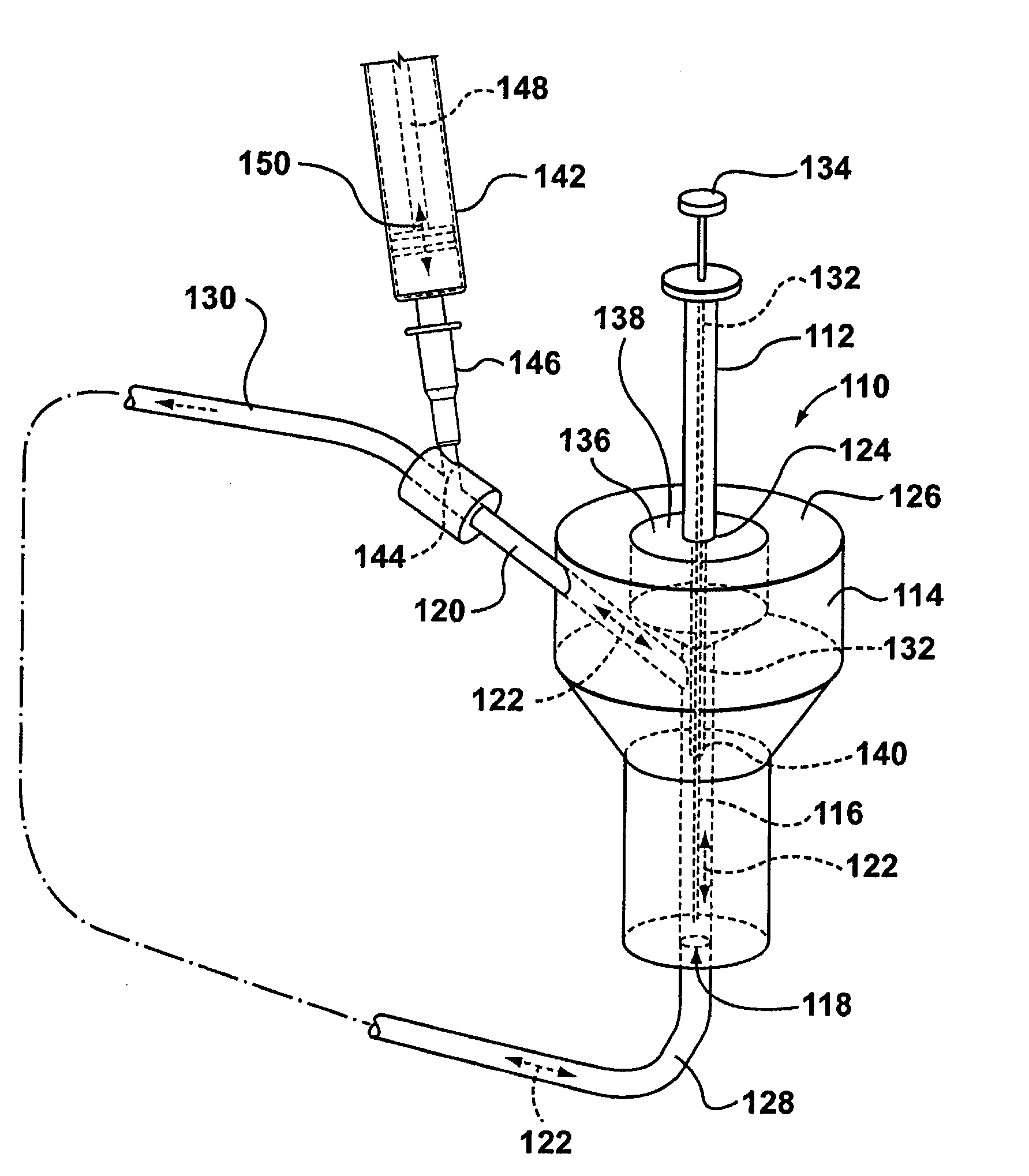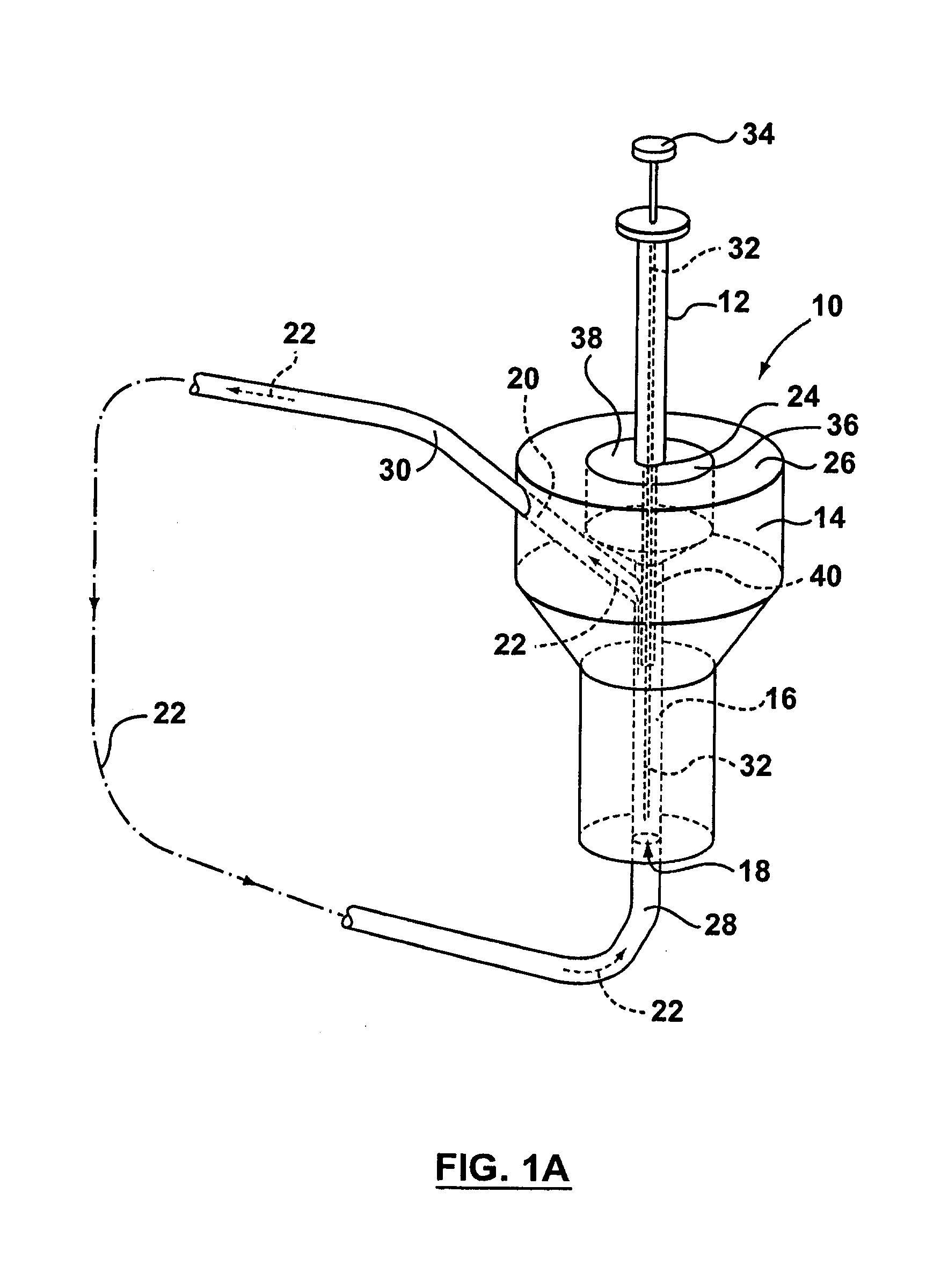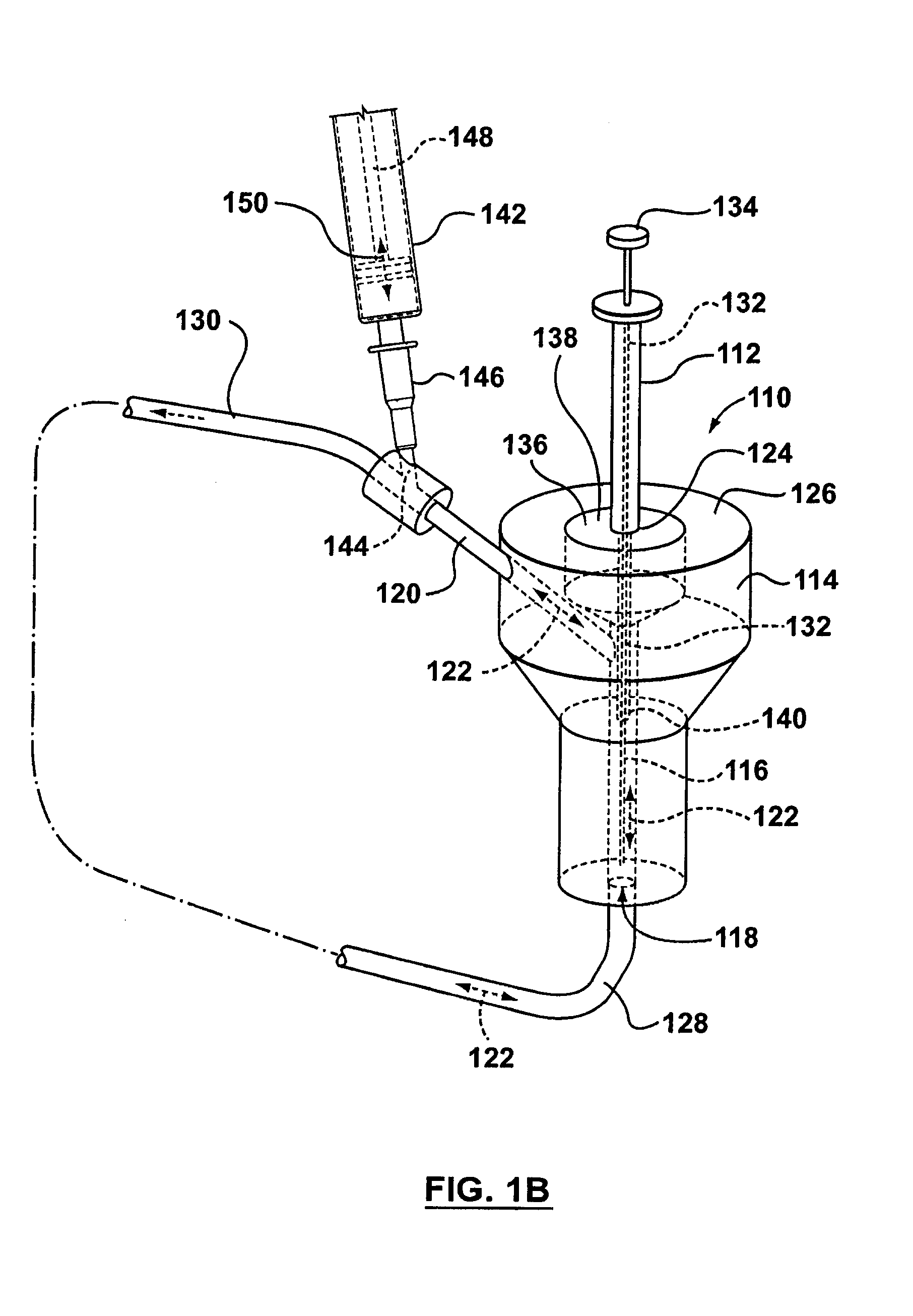Method and device to extract components contained in a fluid
a technology of components and fluids, applied in the field of methods and devices to extract components contained in fluids, can solve the problems of difficult quantitative production, limited number of samples that can be taken, and inapplicability of drugs highly bound to plasma proteins, etc., and achieve the effect of facilitating an interfa
- Summary
- Abstract
- Description
- Claims
- Application Information
AI Technical Summary
Benefits of technology
Problems solved by technology
Method used
Image
Examples
example 1
[0128]In vivo experiments are conducted with conscious male Sprague-Dawley rats implanted with jugular vein and carotid artery catheters. The catheters are plugged and exteriorized at the nape of the neck. Prior to dosing, the opening of the device is connected to the carotid artery catheter. The channel of the device is either connected to the jugular vein catheter or is connected to a syringe pump. Connecting the device to the jugular vein catheter allowed for automatic return of the arterial blood, using the pumping action of the heart of the animal. Connecting the device to a syringe allows for precise control of the blood flow rate through the device. The device and the associated tubing are kept warm at 38° C.
[0129]Rats are administered either 1 or 0.5 mg / kg diazepam by bolus injection into the jugular vein catheter. At each sampling time point, a sterile SPME device is placed through the septum into the interface so that only the coated portion of the fiber is exposed to the ...
example 2
[0138]In vivo mouse experiments are conducted with conscious male Swiss Webster mice implanted with a carotid artery catheter. The catheter is plugged and exteriorized at the nape of the neck and the animal is allowed to recover. Prior to dosing, the device for component extraction, as in for example but not limited to FIGS. 2A and 2B, is connected to the carotid artery catheter and rested on the back of the animal. Mice are administered 4 mg / kg carbamazepine by bolus injection into the tail vein. One minute prior to each sampling time point, a sterile SPME device is placed through the septum into the device so that only the coated portion of the fiber is exposed to the blood. A Tubercullin® syringe is also placed through the septum of the interface parallel to the SPME device (for example, see FIGS. 2A and 2B). Blood flow through the interface is induced by the push / pull action of the syringe. Blood (50-100 μL) is withdrawn over 20 seconds and then pushed back over 20 seconds. This...
PUM
 Login to View More
Login to View More Abstract
Description
Claims
Application Information
 Login to View More
Login to View More - R&D
- Intellectual Property
- Life Sciences
- Materials
- Tech Scout
- Unparalleled Data Quality
- Higher Quality Content
- 60% Fewer Hallucinations
Browse by: Latest US Patents, China's latest patents, Technical Efficacy Thesaurus, Application Domain, Technology Topic, Popular Technical Reports.
© 2025 PatSnap. All rights reserved.Legal|Privacy policy|Modern Slavery Act Transparency Statement|Sitemap|About US| Contact US: help@patsnap.com



